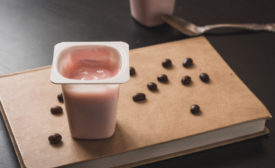Ingredients for Dairy Processors
Immune health will continue to drive food and beverage purchases in 2022.
Read More
Inclusions are more than extras in dairy
Dairy processors can use these ingredients to impart health benefits, jazz up flavor and create exciting textures.
February 8, 2022
Tackling health and sustainability in the dairy industry — together
As environmental concerns grow, sustainability and health-consciousness now go hand-in-hand.
January 12, 2022
Sugar reduction top of mind among consumers
Sweetener blends deliver the sweet spot in reduced-sugar dairy applications.
January 12, 2022
Gums, stabilizers and emulsifiers are dairy’s supporting actors
Selected and used appropriately, these ingredients can help dairy processors turn in a winning performance.
December 17, 2021
Probiotics, prebiotics are natural partners for dairy
These ingredients can attract today’s health-concerned shoppers.
December 6, 2021
Enhance nutrition in cultured dairy products
Vitamins, minerals and prebiotics spell opportunity.
November 22, 2021
Stay ahead of the curve. Unlock a dose of cutting-edge insights.
Receive our premium content directly to your inbox.
SIGN-UP TODAYCopyright ©2025. All Rights Reserved BNP Media.
Design, CMS, Hosting & Web Development :: ePublishing









.jpg?height=168&t=1639062115&width=275)

